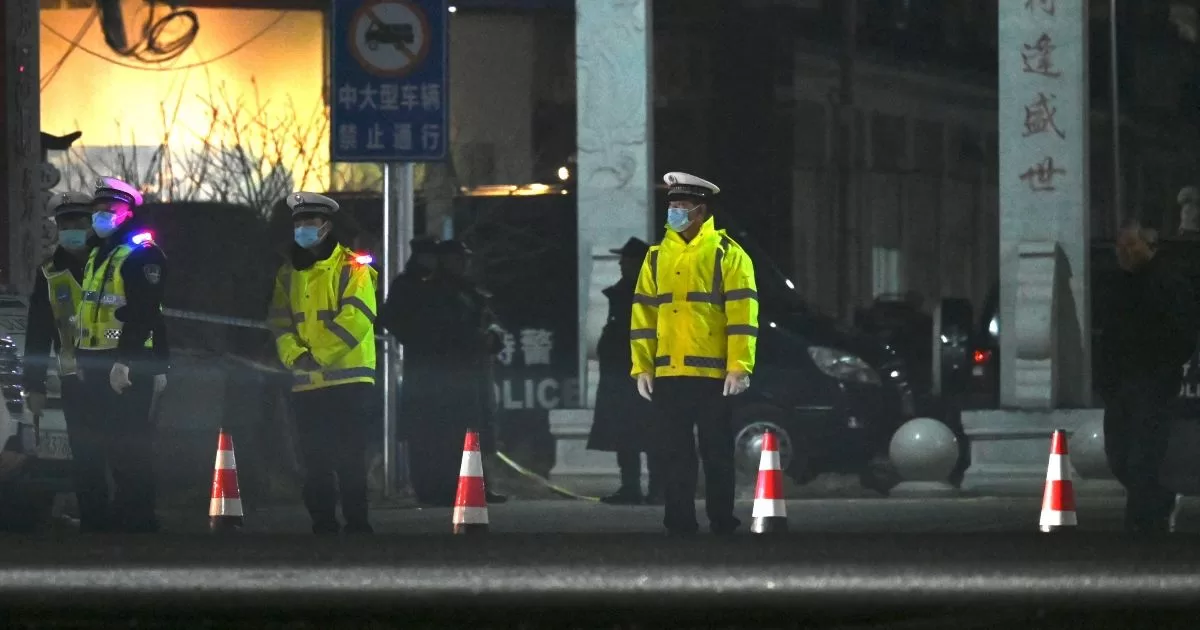In March 2022, after a fatal weekend that included 87 homicides, El Salvador took a turn in security policy. Less citizen rights and greater attributions to the police forces were just the beginning of a process that lowered crime rates, but which is still harshly questioned.
In recent weeks, the president Nayib Bukele He showed the world a prison for 40,000 inmates and the debate was installed in Salvadoran society and in the world. In this report, we ask ourselves, what is hidden behind the mega-prison in El Salvador?
The country has lived through violent times for more than four decades. A twelve-year civil war and successive political crises, coupled with deep social inequality, resulted in thirty years of gang proliferation.
In 2015, El Salvador was the most dangerous country in the world that, without being at war, registered a rate of 103 homicides per 100,000 inhabitants. However, from 2016 onwards, the downward trend in homicides was constant and, while the government spoke of an effective policy on this issue, others attributed it more to a decision by the gangs or a pact with them than to government action.
In 2020, and with elections in between, the then mayor of the capital, Nayib Bukele, became president promising more citizen security. Despite the fact that measures were issued, unofficially there was talk of a pact with the MS13 and Barrio 18 gangs with the aim of maintaining the downward criminal trend and guaranteeing their own governability.
However, in 2022, that pact was broken and, between March 25 and 27 of that year, 87 homicides were committed in the streets of El Salvador. In response, Bukele ruled an emergency regime throughout the territory.
The system that limits the rights of citizens and that grants exceptional power to the security forces of that country. It’s been a year now and, according to official figures, in that period More than 61,000 suspected gang members were arrested.
Within the framework of this regime that, according to the government, tries to bring the crime rate to zero and that opponents denounce as an affront to human rights, the controversial idea of the Center for the Confinement of Terrorism (CECOT) was born, the famous mega-prison .

The prison is located about 74 kilometers southeast of the Salvadoran capital, in the municipality of Tecoluca, in an isolated rural area and, according to the authorities, its dimensions -116 hectares- make it the largest prison in the Americas.
With capacity for 40,000 inmatesthe Center for the Confinement of Terrorism (CECOT) is guarded by 19 watchtowers, more than 600 members of the Armed Forces and 250 members of the National Civil Police.
On the ground, eight pavilions were built surrounded by a concrete wall 11 meters high and 2.1 kilometers long. In addition, the property is protected by electrified fences.
Before entering the prison, both prisoners and prison service workers must undergo a body scanner to record even the smallest of movements.
The prisoners only have two meals a day and, according to Bukele, they will not have any contact with the outside world. For their court hearings, they will leave their cells to go to a special room where they will have a video call.
On February 24, the first 2,000 gang members arrived at the prison. The event was broadcast live throughout the country and shared with the rest of the international press.

The images of the opening of the CECOT are shocking: thousands of gang members, with shaved heads and tattooed and naked torsos, are guarded and transferred, through a strong security operation, to the mega-prison.
That same day, on Twitter, Bukele stated that the prisoners would live in that new prison for a decades, without being able to do more harm to the Salvadoran population. However, the exception regime and the mega-prison have several controversial aspects.
While many affirm that Bukele’s shock policy worked and that the numbers support him, others mention the repeated violations of human rights.
With accusations ranging from arbitrary arrests to torture by police authorities, organizations such as Amnesty International denounced El Salvador for its practices.
In mid-November 2022, relatives of victims and those unjustly detained demonstrated in the streets and accused the government of deteriorating health, death, and serious injuries. Even the president of Colombia, Gustavo Petro, maintained a crossroads via social networks, in which he questioned the effectiveness of the Bukele method.
Are the regime of exception and the mega-prison the solution to the climate of violence that exists in a good part of Latin America? Many analysts wonder if it is not, rather, a dramatic decision that does not solve the underlying problem of insecurity in the country.
Keep reading:


